AUTHOR

A Cambridge University alumnus who last year completed a master’s degree in War Studies at King’s College London.

AUTHOR

A Cambridge University alumnus who last year completed a master’s degree in War Studies at King’s College London.
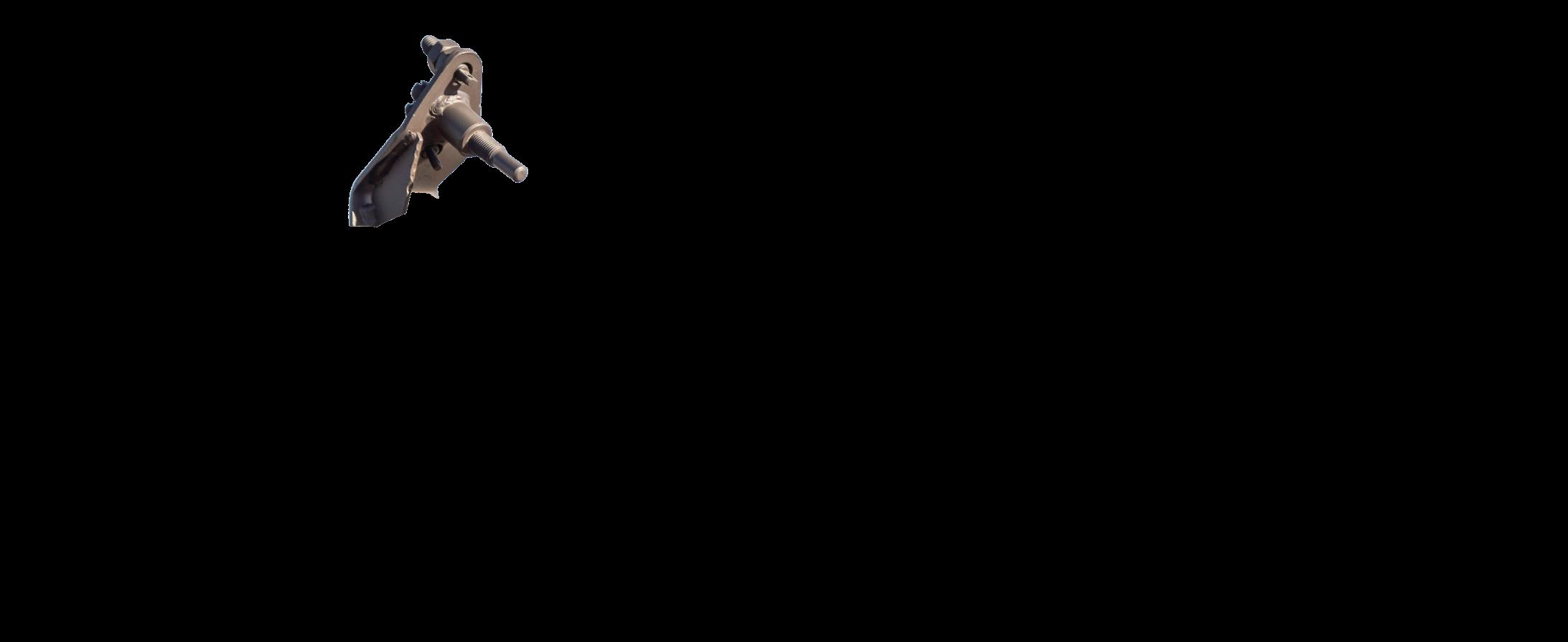
The Centre for Historical Analysis and Conflict Research is the British Army’s think tank and tasked with enhancing the conceptual component of its fighting power. The views expressed in this In Depth Briefing are those of the author, and not of the CHACR, Royal Military Academy Sandhurst, Ministry of Defence or the British Army. The aim of the briefing is to provide a neutral platform for external researchers and experts to offer their views on critical issues. This document cannot be reproduced or used in part or whole without the permission of the CHACR. www.chacr.org.uk
AFTER two decades of fighting the Global War on Terror, Western states are once again turning their attention to great power competition. Russia’s fullscale invasion of Ukraine has reminded many European states that they must be prepared to fight high-intensity conventional conflicts. The United States, meanwhile, is readying itself for a possible confrontation with China. There is no appetite in Western capitals for fighting so-called ‘small wars’ anymore. It appears that, as others have put it, ‘the era of counter-insurgency is drawing to a close’.1 Clearly, there are good reasons why many Western governments are
focusing on the threats posed by peer or near-peer adversaries. But it would be extremely shortsighted to consign small wars, and the strategies used to wage them, to the dustbin of history.
To understand why, one should look at the Sahel. At the turn of the millennium, this vast region of Africa was relatively peaceful. Today, though, it is mired in political instability and
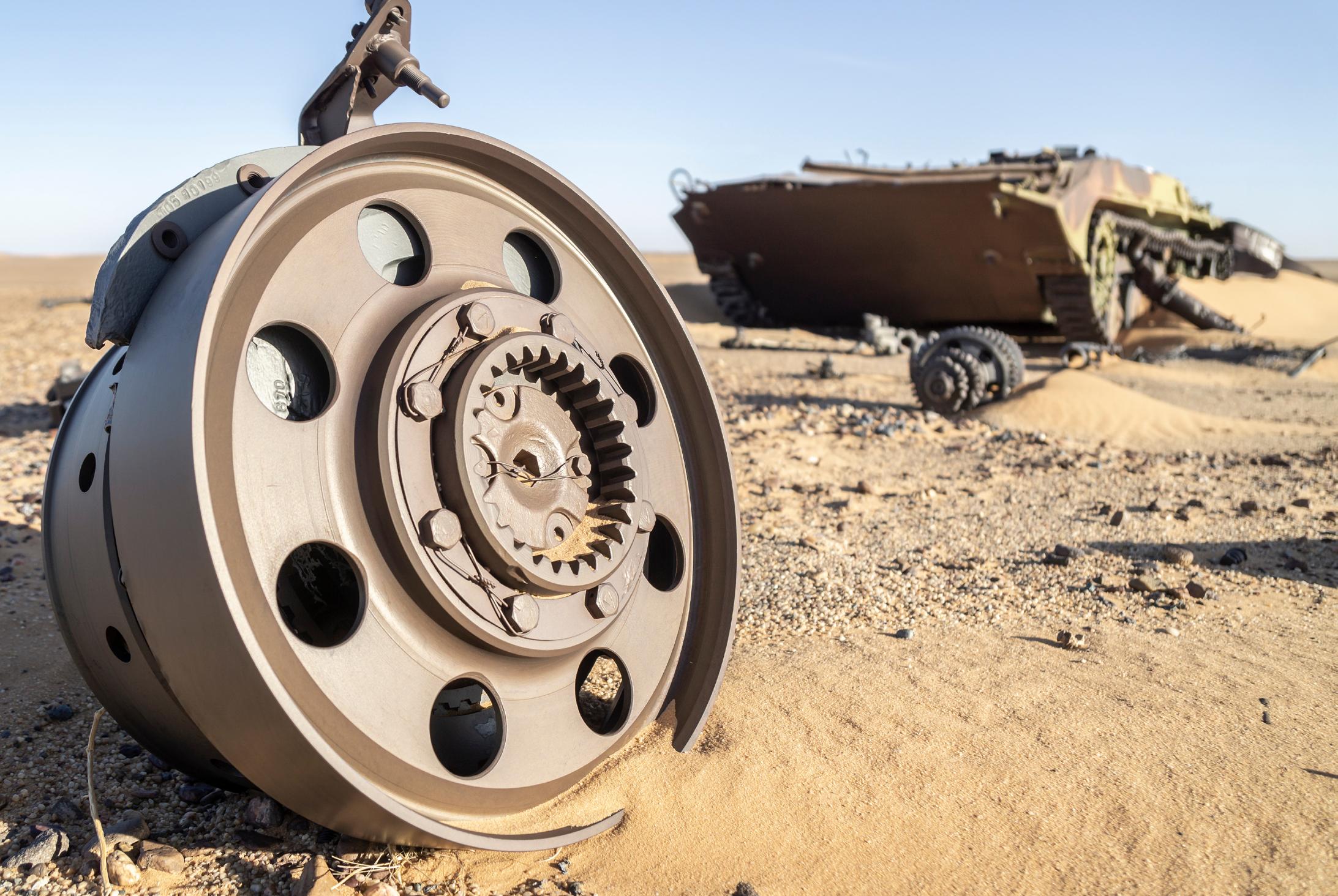
violence. Weak governments struggle to exercise control beyond major cities; coups have become commonplace; and a dizzying array of factions make up a complex tapestry of conflict which threatens to engulf neighbouring states.2 The current power struggle in Sudan, which risks degenerating into a protracted civil war, is a microcosm of the wider region’s woes. As a consequence, the Sahel has become ‘the epicentre of terrorism,’ according to the Global Terrorism Index, ‘accounting for more deaths in 2022 than both South Asia and the Middle East and North Africa combined’.3
The causes of these ills are many but not unfamiliar:
corrupt governments, fragile state institutions, poverty, food insecurity, and inter-ethnic tension. And despite efforts to improve regional security – most notably France’s Operation Barkhane and the UN’s Multidimensional Integrated Stabilization Mission in Mali – conditions on the ground continue to deteriorate. Senior UN officials now fear that ‘the region is very close to a tipping point’.4
Can the Sahel come back from this tipping point, or will it descend into a Hobbesian war of all against all? As the saying goes: it is difficult to make predictions, especially about the future. Nevertheless, it is possible to examine some of the long-term trends shaping the region and make some educated guesses about what their consequences might be. Two, in particular, merit study.
The first and most important is the demographic structure of the Sahel. In the decades ahead, its population will grow at an astonishing speed. The
160 million).5 This will present governments with a long list of challenges, at the top of which will be the matter of employment. Unemployment rates are already high across much of the region, particularly for young people, and will only grow higher in the years ahead. In Mali, for example, 300,000 people are reaching working age each year but the economy is creating fewer than 50,000 jobs annually.6 To make matters worse, financial experts are warning that sub-Saharan Africa is ‘heading rapidly toward a debt crisis’.7
The challenges associated with rapid population growth will be exacerbated by the second longterm trend shaping the Sahel: climate change. In October 2020, the UN’s top humanitarian official, Mark Lowcock, warned that the region lay at ‘the
and without drastic action, the UN predicts that by 2080 they may rise by as much as 4.3°C.9 Rainfall is becoming more erratic, making both drought and flooding more likely, while crucial bodies of water (such as Lake Chad) have shrunk dramatically. Consequently, roughly 65 per cent of cultivatable land in the Sahel is now considered to be degraded.10 This will intensify the pressure on the region’s jobs market, but perhaps the more worrying problem is that of food security. Record numbers of people are already facing acute food shortages this year – in part due to the war in Ukraine – just as the provision of humanitarian aid has been hindered by the growing violence.11 Although precise estimates vary, numerous studies project that agricultural yields will fall as temperatures

After all, Malthusian writers who repeatedly predicted global famines in the late 20th century were, thankfully, proven wrong.12 The stark reality is, however, that the signs are not encouraging.
On current trajectories, then, the Sahel will soon be home to
4 and 8Henry Samuel, ‘“Nowhere scares me more than the Sahel” warns UN humanitarian chief,’ The Telegraph, 13 October 2020.
5The G5 is a regional security group comprising Mauritania, Mali, Burkina Faso, Niger, and Chad.
6Edward Paice, Youthquake: Why African Demography Should Matter to the World (Bloomsbury, 2022), p. 243.
7Antony Sguazzin, ‘Next Africa: Rising Debt Costs Set Continent on Road to Crisis,’ Bloomberg, 9 December 2022.
9‘UN warns of worsening conflict and displacement in Sahel without immediate climate action,’ UN High Commission for Refugees, 16 November 2022.
10‘Human Rights, Climate Change, and Migration in the Sahel,’ United Nations Human Rights Office of the High Commissioner (November 2021), p. 4.
11‘West Africa faces acute food shortages with thousands near famine, say UN agencies,’ Reuters, 18 April 2023.
12For example, see Paul R. Erlich and Anne Howland Erlich, The Population Bomb (Ballantine Books, 1968).
“RECORD NUMBERS OF PEOPLE ARE ALREADY FACING ACUTE FOOD SHORTAGES... WILL SAHEL STATES BE ABLE TO ENSURE ADEQUATE FOOD SUPPLIES AS THEIR POPULATIONS GROW AND THEIR CLIMATE WORSENS?”Picture: Yoda Adaman/unsplash
many millions of unemployed and hungry young people. As proponents of the ‘Demographic Transition Theory of War’ will tell you, this is a recipe for unrest, political instability, and eventually conflict.13 Even for strong states this would represent a huge challenge; for the Sahel’s already-fragile states, it could prove terminal. The possibility that the entire region will become ungovernable cannot be discounted.
To make matters worse, the problems described above will not remain confined to the Sahel. In all likelihood, violence will spill over into the more peaceful states on the region’s periphery. In fact, data from the Global Terrorism Index suggests that this is already happening, with countries such as Togo and Benin recording their worst scores on record.14 Nigeria, which possesses Africa’s largest economy and population, already faces many of the same problems which have plagued its northern neighbours, including high unemployment, corruption, inter-ethnic tension,
13Deborah Jordan Brooks, Stephen G. Brooks, Brian D. Greenhill, and Mark L. Haas, ‘The Demographic Transition Theory of War: Why Young Societies Are Conflict Prone and Old Societies Are the Most Peaceful,’ International Security, Vol. 43, No. 3 (Winter 2018/19), pp. 53–95.
14Institute for Economics & Peace. Global Terrorism Index 2023: Measuring the Impact of Terrorism (Sydney, March 2023).
15Serge Michailof, Africanistan: Development or Jihad (Oxford University Press, 2018).
16Bruno Waterfield, ‘We’re facing destruction, European chief warns,’ The Times, 24 September 2015.
17James Crisp, ‘How the Sudan crisis could trigger a new migration wave,’ The Telegraph, 26 April 2023.
18‘Niger suicide bombers target Areva mine and barracks,’ BBC News, 24 May 2013.
19The importance of Algerian gas has, of course, only grown as European economies have sought to wean themselves off Russian imports.
20‘In Amenas inquest: British victims of Algeria attack,’ BBC News, 28 November 2014.
and Islamist insurgency. As a result – and despite its natural resource wealth – the country is acutely vulnerable to the chaos emanating from its north. If the authority of the state were to collapse in Nigeria, as it has in several nearby states, shockwaves would ripple across all of West Africa, and beyond.
At present, few Western leaders wish to confront the implications of these trends. Perhaps they are telling themselves that the Sahel is a distant region, and that its problems are of little relevance to Western policymakers. This would be a mistake: the West ignores the Sahel at its own peril. If the region does descend into chaos, it will have to face the consequences – whether it wants to or not.
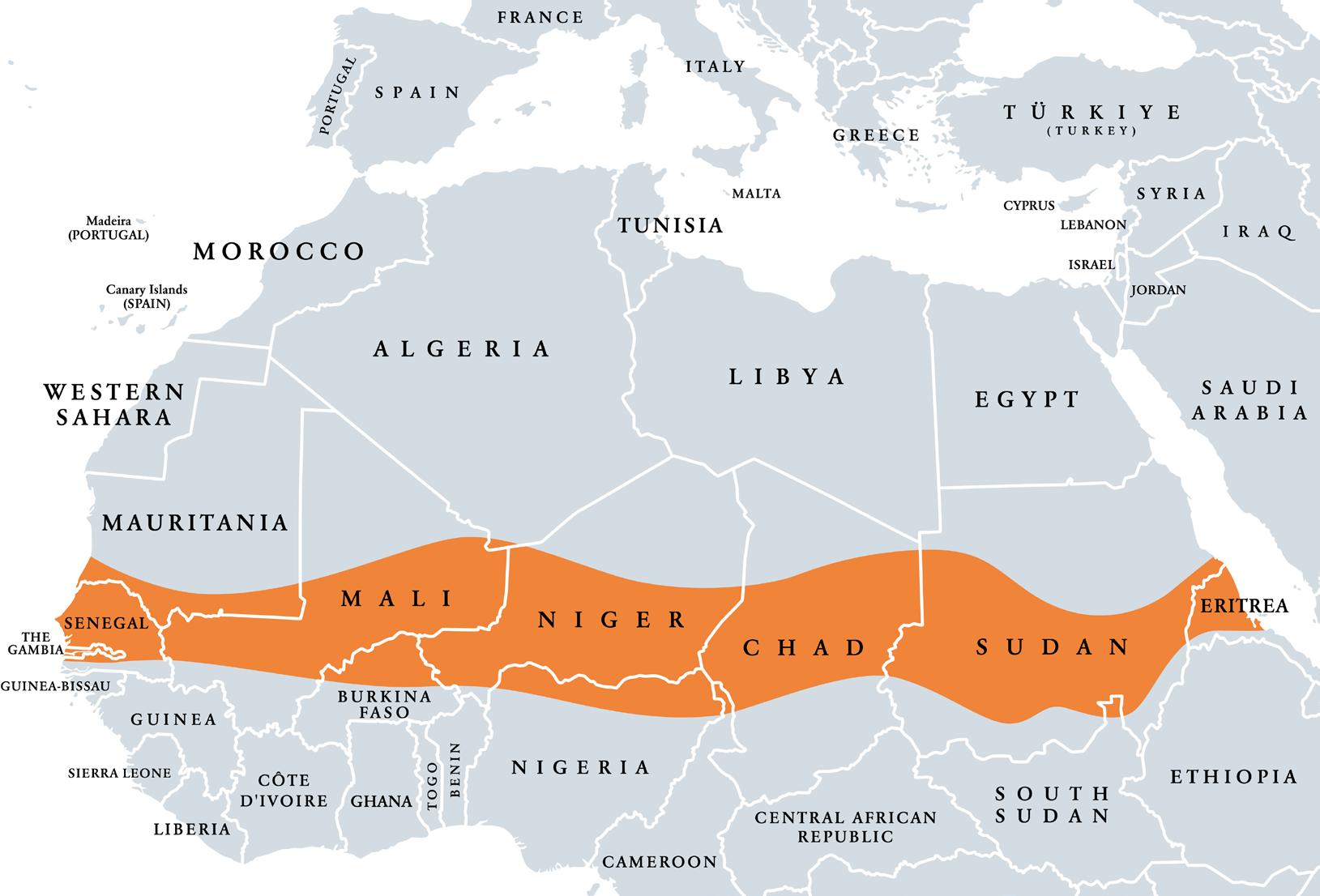
Perhaps the most concerning of these is the possibility that the Sahel will become a vast base for jihadist groups. This point has been made most forcefully by the former operations director of the French Development Agency, Serge Michailof, in his book Africanistan. Michailof warns that if security conditions in the Sahel continue to deteriorate, the West will be confronted by
‘a new Afghanistan at our doors, only closer, infinitely bigger, and more dangerous’.15 Safe from the prying eyes of state authorities, jihadist organisations could plan attacks on Western soil with relative impunity. As Sudan teeters on the brink of civil war, it is perhaps worth recalling that the country served as Osama bin Laden’s base during the early 1990s, before his expulsion in 1996. For the Sahel’s many militant Islamist groups, millions of desperate and unemployed young Africans would represent a bottomless pool of potential recruits. And while it is true that most of these organisations currently appear more interested in winning local power struggles than in launching attacks abroad, the presence of both al-Qaeda and Islamic State should be of concern given their record of terrorism on Western soil.
A second fear is that state failure in the Sahel will precipitate a refugee crisis of unprecedented scale as tens of millions of people flee their homes in search of food, shelter, and security. Inevitably, many will turn to Europe, reigniting the arguments which roiled the continent during the 2015 refugee crisis and even
risked ‘destroying the European Union’.16 In addition, states which border the EU will be tempted to instrumentalise these refugees, perhaps to gain concessions from the bloc (as Turkey has done) or in an attempt to destabilise it (as Belarus did in 2021). In what may be a sign of things to come, the UN Refugee Agency is already preparing for a new wave of displacement as hundreds of thousands of Sudanese flee the ongoing conflict in the country.17
Finally, insecurity in the Sahel and its neighbourhood imperils strategically valuable Western investments. Niger, for example, is a crucial source of uranium for the French nuclear sector, but French-operated mines have been attacked by Islamist groups operating in the country.18 Niger’s northern neighbour, Algeria, also plays a key role in maintaining Europe’s energy security, supplying the continent with much of its natural gas.19 The country’s gas facilities have been targeted by Islamist groups, however, most infamously in January 2013 when militants affiliated with al-Qaeda attacked a plant near the town of In Amenas, leading to the death of 40 employees (including six
British citizens).20 Mauritania, meanwhile, possesses large deposits of copper, vast quantities of which will be needed if Western states are to achieve their net zero ambitions. In short, insecurity in and around the Sahel threatens to cut the West’s supply of critical resources at the very time that need for them is increasing.
The scenarios described above are just some of the challenges with which the West will have to grapple if the Sahel’s decline continues. Clearly, more must be done to prevent them from materialising. There can be no denying, however, that the scale of the challenge is daunting. The political and economic problems driving conflict in the Sahel are myriad and unlikely to be solved any time soon. Simply stabilising the security situation in such a vast region would probably require thousands, if not tens of thousands, of additional Western troops. No Western government would currently
risk so much blood and treasure undertaking such an operation, especially as many have already expended significant financial and military resources supporting Ukraine. In any case, it is not clear that an increased Western presence would be welcomed by the states of the Sahel. After all, the military governments of both Mali and Burkina Faso have effectively expelled French forces from their territory after relations with Paris soured.21 And even if these obstacles could be overcome, success would not be guaranteed. Nation-building is not easy: 20 years of military training and many billions of dollars in aid could not prevent the Afghan state from crumbling in the summer of 2021.
Many Western countries will,
therefore, be tempted to kick the can down the road. They ought to resist this temptation. Sooner or later, the Sahel’s problems will become the West’s problems too, and the longer governments wait to act, the bigger those problems will become. Countries fortunate enough to be located far from the Sahel, such as the United States, may respond that its woes are none of their business. Echoing Neville Chamberlain’s comments on the Sudeten Crisis of 1938, they might remark that the region’s conflicts are ‘quarrels in faraway countries, between peoples of whom we know nothing’. Such an attitude would, however, only serve to sow division among the Western alliance, effectively abandoning the states of NATO’s southern flank during their time of need.
Moreover, refusing to act will only encourage Russia and China to expand their alreadygrowing influence in Africa. The infamous Wagner mercenary group now operates in several African countries, most notably Mali, Libya, and the Central African Republic. That list may yet grow longer. During a visit to Mali in February, Russia’s foreign minister Sergei Lavrov suggested that his country would be willing to work with others in the region to tackle the threat of jihadism, stating that it was an issue that ‘concerns Guinea, Burkina Faso, Chad and the Sahel region generally and even the coastal states on the Gulf of Guinea’.22 In short, not intervening bears a cost too.
So Western policymakers are caught between a rock and a hard place. They cannot simply bury their heads in the sand while chaos spreads from the Sahel to neighbouring states, but nor can they realistically launch the kind of large-scale intervention that would be needed to stabilise the region’s security. How, then, can
Perhaps the answer is a strategy the more stable countries located
strategy. It would be prudent, for example, to construct shelter and
21‘France agrees to withdraw troops from Burkina Faso within a month,’ Al Jazeera, 26 January 2023.
22Beverly Ochieng, ‘Lavrov in Africa: Have Wagner mercenaries helped Mali’s fight against jihadists?’ BBC News, 7 February 2023.
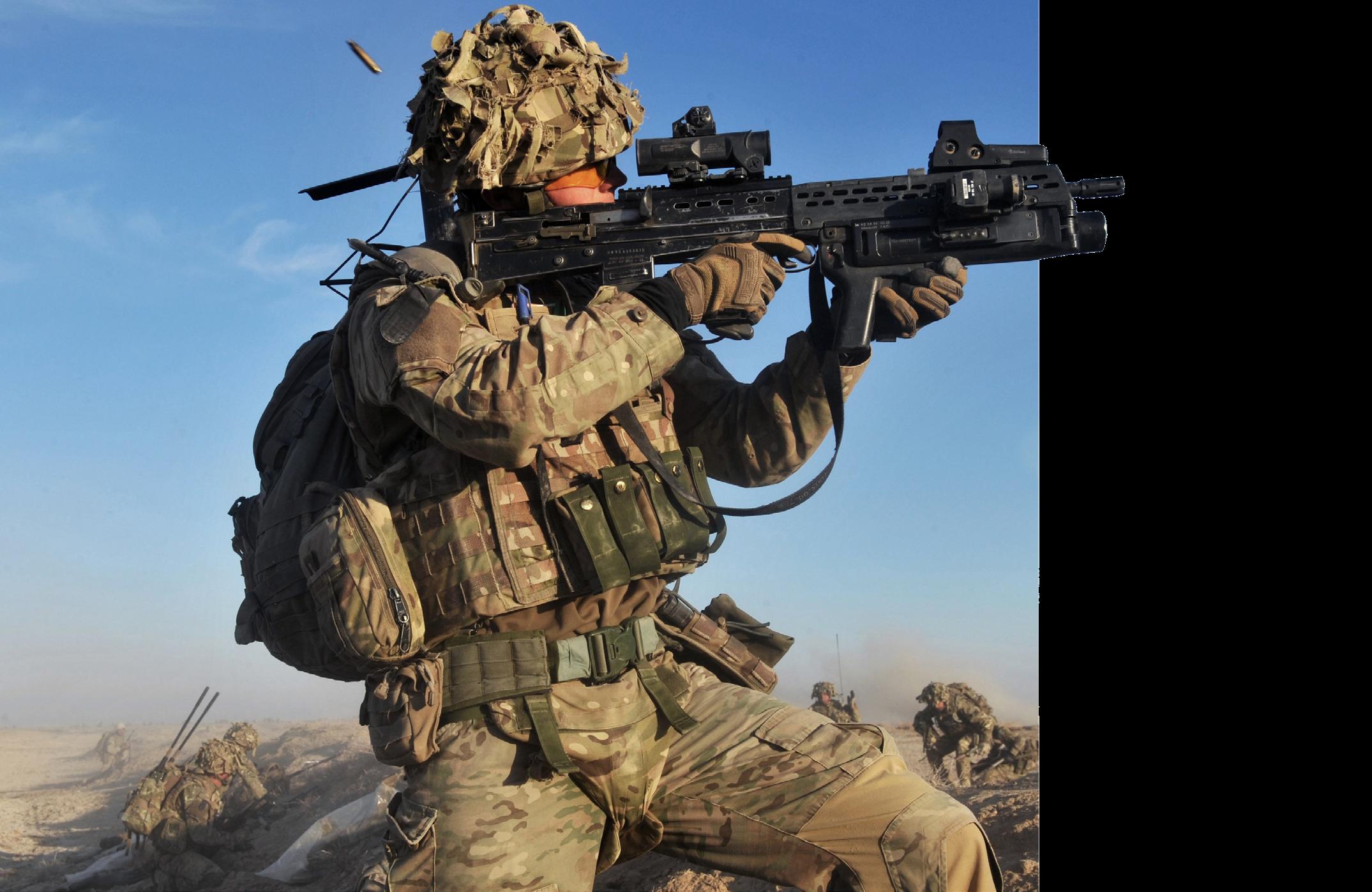
IN-DEPTH BRIEFING // THE SAHEL AND THE RETURN OF SMALL WARS
“NATION-BUILDING IS NOT EASY: 20 YEARS OF MILITARY TRAINING AND MANY BILLIONS OF DOLLARS IN AID COULD NOT PREVENT THE AFGHAN STATE FROM CRUMBLING IN THE SUMMER OF 2021.”A British soldier provides covering fire during Operation Qalb – a joint International Security Assistance Force and Afghan National Security Forces mission to disrupt insurgent supply chains – in 2013.
processing centres in anticipation of refugee flows from the Sahel. Strengthening border security with modern surveillance systems would also be sensible given the itinerant nature of many militant groups. But military assistance would still be vital to ensure that partner forces could respond effectively to the threat of insurgency or jihadist terror. In practice, this might entail deploying intelligence, surveillance and reconnaissance assets to partner countries, offering counterinsurgency and counter-terror training to their security forces, providing them with quality weapons and equipment, and so on. Meanwhile, Western special forces could continue to conduct surgical counter-terrorism operations within the Sahel itself in order to disrupt jihadist activities there. Over the course of many years, such an approach could yield significant benefits without needing to deploy thousands of NATO soldiers in front-line combat roles.
A strategy like this would suit the UK’s armed forces particularly well. Firstly, the British Army has a good deal of recent experience when it comes to training partner forces, not least during Operations Orbital and Interflex. Secondly, the UK already enjoys security relationships with Commonwealth nations such as Sierra Leone, Ghana, and Nigeria, which provide a natural basis for closer cooperation. Indeed, there are signs that the UK is already seeking to deepen these ties: for example, British and Nigerian officials met in London last year for the first ever Security and Defence Partnership dialogue between the two countries. Finally, a strategy of containment would require
a relatively light footprint, an important point given that the British Army’s numbers are due to be cut to 73,000 in the near future.
Like all strategies, containment would have its flaws and limitations. Western powers might opt to pursue a different one, but the truth is that no silver bullet exists: all the available choices are imperfect. But inaction would be the worst choice of all. Crucially, any serious strategy will have to address the growing problem of insurgency in the Sahel. And whether it succeeds or fails will depend – at least in part – on the ability of Western militaries to offer effective counter-insurgency
assistance at scale. That ability is not one which can simply be turned on and off like a tap. Rather, it requires cultivation and investment: in doctrine, in equipment, in training, and in personnel. Considering the likely future of the Sahel, these are investments worth making.

Today, most Western governments are paying relatively little attention to the slow-motion crisis unfolding in the Sahel. They are – quite understandably perhaps – more concerned by events taking place in Ukraine. At some point, however, that will change, as the plight of the Sahel becomes an ever more pressing international issue. Addressing that issue now will be costly, of course, but it will be much less costly than addressing it in ten or 20 years’ time when conditions have deteriorated further. And when Western states do decide to act, they will have to hope that their armed forces have not forgotten the lessons of the last two decades.
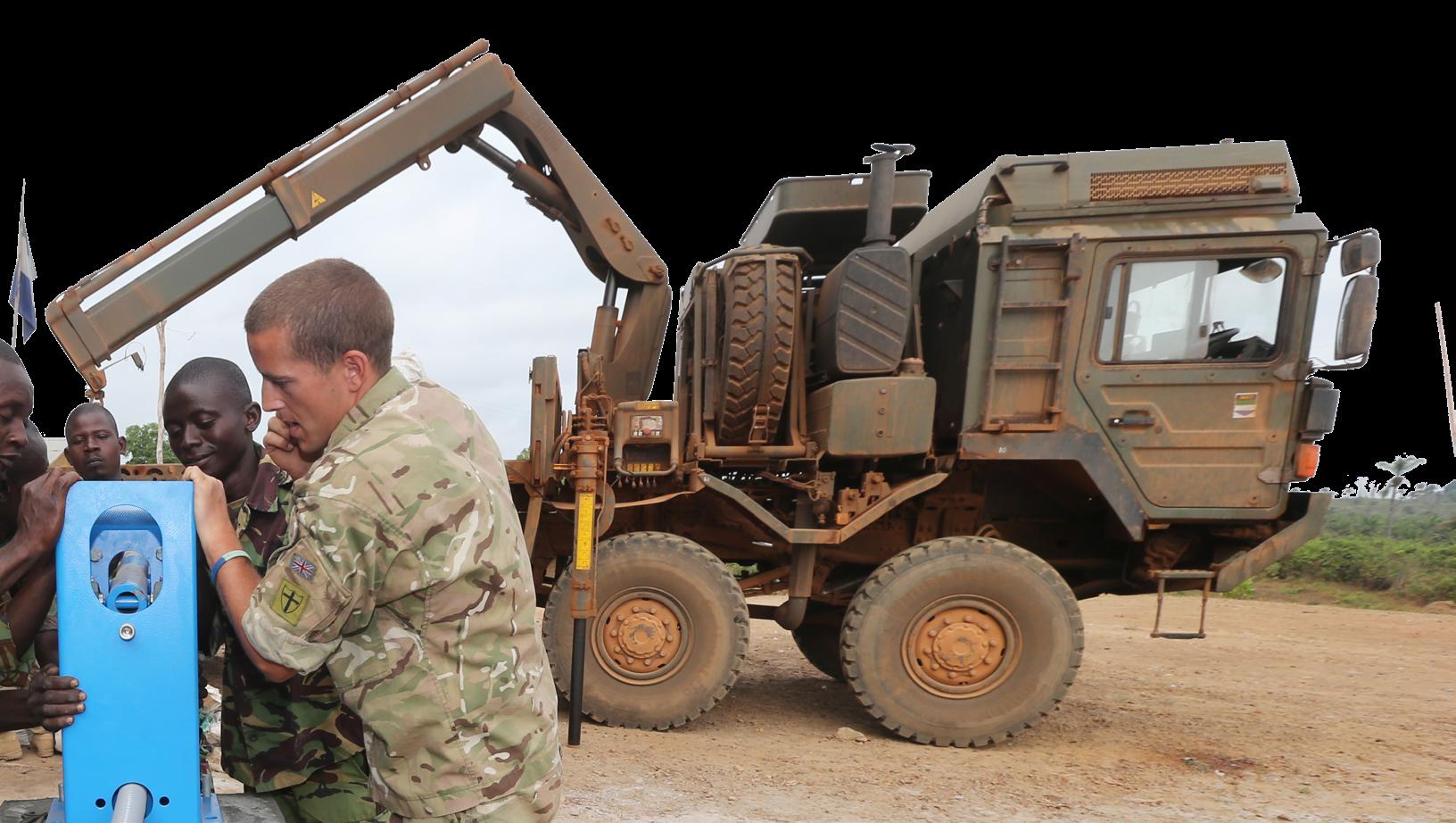
“THE BRITISH ARMY HAS A GOOD DEAL OF RECENT EXPERIENCE WHEN IT COMES TO TRAINING PARTNER FORCES... [AND] THE UK ENJOYS SECURITY RELATIONSHIPS WITH COMMONWEALTH NATIONS SUCH AS SIERRA LEONE, GHANA, AND NIGERIA, WHICH PROVIDE A NATURAL BASIS FOR CLOSER COOPERATION.”BRIEFING // THE SAHEL AND THE RETURN OF SMALL WARS Royal Engineers responding to a request from the International Mentoring and Training Team Sierra Leone in 2013 to drill bore holes in direct support of the Republic of Sierra Leone Armed Forces. Picture: Courtesy of Soldier magazine © Crown copyright